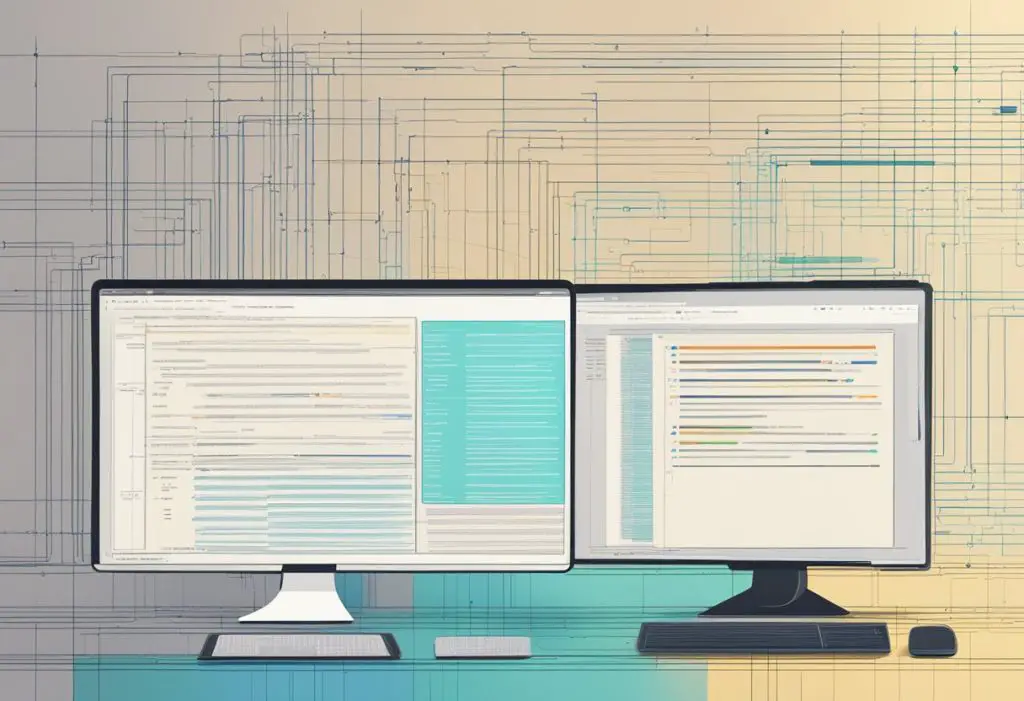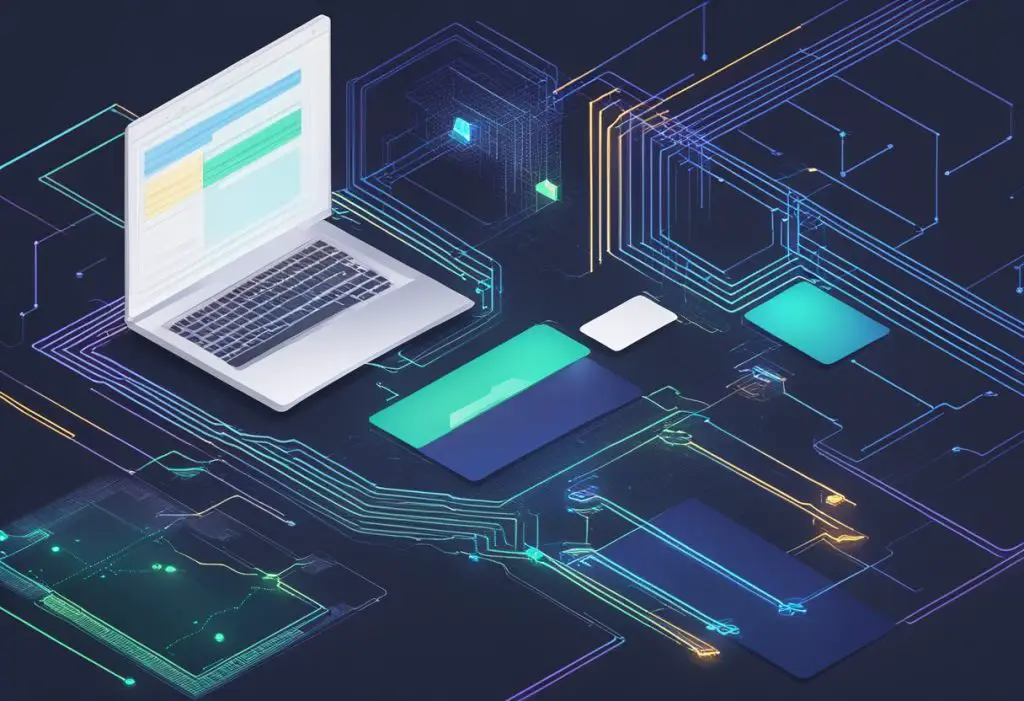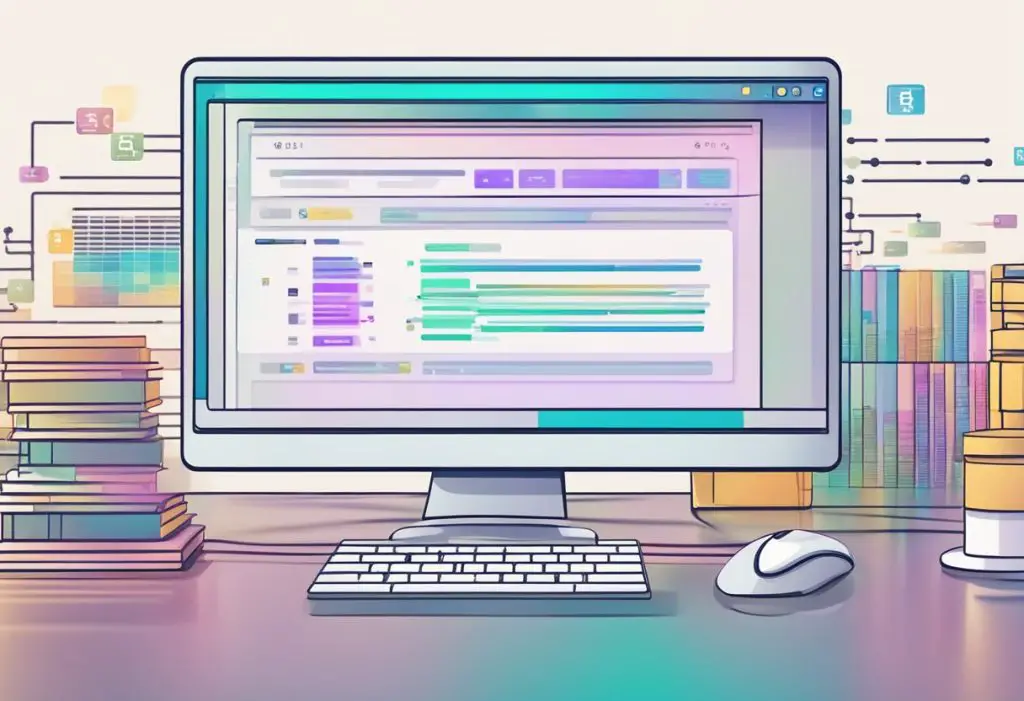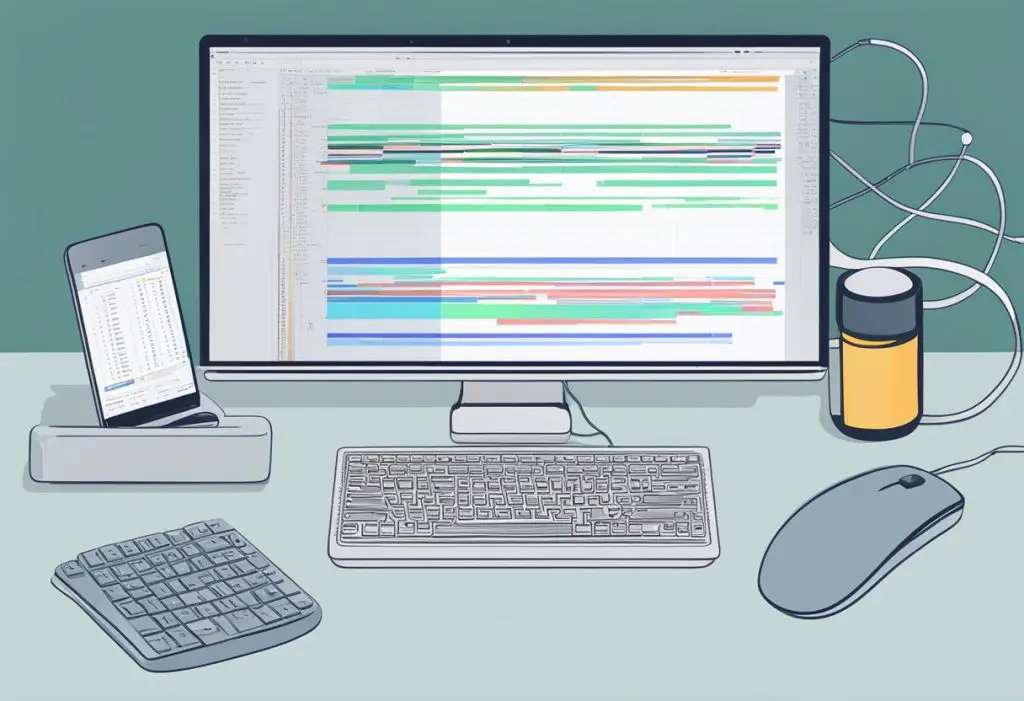Table of Contents
Introduction to Blockchain Coding Basics
Blockchain Coding Basics: Blockchain technology is a decentralized technology that has the potential to revolutionize the way we conduct transactions. Blockchain coding is the process of creating software applications that leverage blockchain technology. Blockchain coding is a relatively new field, but it has already gained significant attention due to its potential to disrupt various industries.
The fundamentals of blockchain technology include decentralization, immutability, and transparency. Blockchain technology is decentralized, meaning that it is not controlled by any central authority. It is also immutable, meaning that once data is recorded on the blockchain, it cannot be altered or deleted. Finally, blockchain technology is transparent, meaning that all transactions are visible to all participants in the network.
Key Takeaways for Blockchain Coding Basics
- Blockchain coding is the process of creating software applications that leverage blockchain technology.
- The fundamentals of blockchain technology include decentralization, immutability, and transparency.
- Blockchain technology has the potential to disrupt various industries.
Fundamentals of Blockchain Technology for Blockchain Coding Basics

Blockchain Coding Basics Image 1
Blockchain technology is a revolutionary concept that has the potential to transform various industries. It is a decentralized, distributed ledger that records transactions in a secure and transparent manner. This section will provide an overview of the fundamental concepts of blockchain technology.
Understanding Blocks and the Chain
A blockchain is a chain of blocks that contains information. Each block in the chain contains a unique digital fingerprint called a hash, which is generated using a hash function. The hash of a block is computed based on the data in the block and the hash of the previous block in the chain. This creates an unbreakable link between the blocks in the chain.
The first block in the chain is called the genesis block. It is the starting point of the blockchain. Each subsequent block is added to the chain in a linear, chronological order. The process of adding a new block to the chain is called mining. Miners compete to solve a complex mathematical puzzle, and the first miner to solve the puzzle gets to add the next block to the chain.
Decentralization and Transparency
One of the key features of blockchain technology is decentralization. It eliminates the need for a central authority to validate transactions. Instead, transactions are validated by a network of nodes that work together to maintain the integrity of the blockchain.
Blockchain technology also offers transparency. All transactions on the blockchain are public, and anyone can view them. This makes it easier to track the movement of assets and reduces the risk of fraud.
Security and Cryptography
Blockchain technology provides a high level of security through the use of cryptography. Each block in the chain contains a hash that is generated using a hash function. This hash is unique to the block and cannot be changed without changing the hash of all subsequent blocks in the chain. This makes it virtually impossible to alter the data in the blockchain.
Blockchain technology also uses public-key cryptography to secure transactions. Each user on the blockchain has a public key and a private key. The public key is used to encrypt transactions, while the private key is used to decrypt them. This ensures that only the intended recipient can access the transaction data.
In conclusion, blockchain technology is a powerful concept that has the potential to transform various industries. It offers decentralization, transparency, and security through the use of cryptography and distributed ledger technology. Understanding the fundamentals of blockchain technology is essential for anyone looking to develop applications and program smart contracts on the blockchain.
Blockchain Development Languages

Blockchain Coding Basics Image 2
When it comes to blockchain programming, developers have a range of programming languages to choose from based on their needs and preferences. In this section, we will explore some of the popular programming languages for blockchain and smart contract development.
Popular Programming Languages for Blockchain Coding Basics
Blockchain programming requires a good understanding of object-oriented programming and functional programming concepts. Some of the popular programming languages for blockchain development are:
- JavaScript: JavaScript is a popular programming language for web development and is also widely used for blockchain development. It is a versatile language that can be used for both front-end and back-end development. JavaScript is used for developing decentralized applications (dApps) on the Ethereum blockchain.
- Solidity: Solidity is a contract-oriented programming language used for writing smart contracts on the Ethereum blockchain. It is a statically-typed language that supports inheritance, libraries, and complex user-defined types. Solidity is similar to JavaScript in syntax and is easy to learn for developers familiar with JavaScript.
- Java: Java is a popular programming language used for developing enterprise-level applications. It is used for developing blockchain applications that require high performance and scalability. Java is used for developing Hyperledger Fabric, a blockchain platform for developing enterprise-level applications.
- Python: Python is a popular programming language used for data analysis, machine learning, and web development. It is also used for blockchain development, especially for developing smart contracts on the Ethereum blockchain. Python is easy to learn and has a large community of developers.
- C++: C++ is a high-performance programming language used for developing system-level applications. It is widely used for developing blockchain applications that require high performance and low-level control. C++ is used for developing the Bitcoin Core software, which is the reference implementation of the Bitcoin protocol.
Smart Contract Development with Solidity
Smart contracts are self-executing contracts with the terms of the agreement between buyer and seller being directly written into lines of code. Solidity is the most popular language for writing smart contracts on the Ethereum blockchain. Solidity is similar to JavaScript in syntax and is easy to learn for developers familiar with JavaScript.
Solidity has a number of built-in functions that can be used to interact with the Ethereum blockchain. Some of the commonly used functions are:
- msg.sender: This function returns the address of the account that is currently executing the smart contract.
- msg.value: This function returns the amount of Ether that is sent along with the function call.
- now: This function returns the current timestamp.
Developers can also define their own functions in Solidity to perform custom operations. Solidity supports various data types, including integers, booleans, and strings, as well as complex data types like arrays and structures.
In conclusion, choosing the right programming language for blockchain development depends on the specific requirements of the project. Developers should consider factors like performance, scalability, and community support when selecting a programming language for blockchain development.
Blockchain Applications and Use Cases

Blockchain Coding Basics Image 3
Blockchain technology has revolutionized the way transactions are conducted across various industries. It has enabled the creation of decentralized applications that are secure, transparent, and tamper-proof. In this section, we will explore some of the most prominent use cases of blockchain technology.
Cryptocurrencies and Digital Assets
Cryptocurrency is one of the most well-known applications of blockchain technology. Bitcoin, Ethereum, Dogecoin, Litecoin, and Stellar are some of the most popular cryptocurrencies. Blockchain technology enables secure and transparent transactions without the need for intermediaries like banks. Digital assets like NFTs (Non-Fungible Tokens) are also gaining popularity, with their use cases ranging from art to music.
Blockchain Beyond Finance
Blockchain technology is not limited to finance. It has the potential to transform various industries, including healthcare, government, supply chain, and data management. In healthcare, blockchain can enable secure and transparent sharing of patient data. In government, blockchain can be used for secure voting and identity management. In supply chain, blockchain can enable transparency and traceability of products. In data management, blockchain can enable secure and transparent sharing of data.
Overall, blockchain technology is gaining mainstream adoption, and its use cases are expanding beyond finance. As more industries adopt blockchain technology, we can expect to see a more secure, transparent, and decentralized future.
Advanced Concepts in Blockchain Coding Basics

Blockchain Coding Basics Image 4
Consensus Mechanisms
One of the most crucial aspects of blockchain technology is the consensus mechanism. It is the method by which the network agrees on the validity of transactions and ensures that the blockchain remains secure and immutable. There are several consensus mechanisms used in blockchain development, including Proof of Work (PoW), Proof of Stake (PoS), and Delegated Proof of Stake (DPoS).
PoW is the most well-known consensus mechanism, and it is used by Bitcoin and several other cryptocurrencies. In this mechanism, miners compete to solve complex mathematical problems to validate transactions and add new blocks to the blockchain. PoS, on the other hand, relies on users holding a certain amount of cryptocurrency to validate transactions. DPoS is a variation of PoS that involves a smaller group of validators who are elected by the network’s users.
Developing for Scalability and Performance
As blockchain technology continues to evolve, developers are faced with the challenge of improving the scalability and performance of blockchain networks. One approach to addressing this challenge is to use sharding, which involves breaking up the blockchain into smaller, more manageable pieces. Another approach is to use off-chain solutions, such as the Lightning Network, to process transactions faster and reduce the burden on the blockchain network.
Developers can also improve blockchain performance by optimizing data structures and implementing efficient algorithms. This involves carefully designing the blockchain’s data storage and retrieval mechanisms to ensure that they can handle large amounts of data without slowing down the network. Additionally, developers can leverage cloud computing technologies to improve blockchain scalability and performance.
In summary, building a robust and scalable blockchain network requires a deep understanding of consensus mechanisms, data structures, and software development. By leveraging advanced concepts and technologies, developers can create blockchain networks that are fast, secure, and capable of handling large volumes of transactions.
Frequently Asked Questions for Blockchain Coding Basics

Blockchain Coding Basics Image 5
How do I start coding blockchain?
To start coding blockchain, one must first understand the fundamental concepts of blockchain technology. This includes the distributed ledger system, cryptography, consensus mechanisms, and smart contracts. Once you have a solid understanding of these concepts, you can start learning a programming language that is commonly used in blockchain development.
What programming languages are commonly used in blockchain development?
The most commonly used programming languages in blockchain development are Solidity, JavaScript, Python, and Go. Solidity is the primary language used for developing smart contracts on the Ethereum blockchain, while JavaScript is used for building decentralized applications (dApps) on the front-end. Python and Go are also popular languages for building blockchain applications due to their simplicity and ease of use.
What are the essential skills required to become a blockchain developer?
To become a successful blockchain developer, one must have a strong understanding of computer science fundamentals, including data structures, algorithms, and object-oriented programming. Additionally, knowledge of cryptography, distributed systems, and blockchain architecture is essential. It is also important to have experience with one or more programming languages commonly used in blockchain development.
Can you recommend any comprehensive books for learning blockchain development?
Yes, there are several comprehensive books available for learning blockchain development. Some of the top recommended books include “Mastering Blockchain” by Imran Bashir, “Blockchain Basics: A Non-Technical Introduction in 25 Steps” by Daniel Drescher, and “Blockchain: Blueprint for a New Economy” by Melanie Swan.
Is blockchain development considered difficult for beginners?
Blockchain development can be challenging for beginners due to the complex nature of the technology and the need for a strong understanding of computer science fundamentals. However, with dedication and a willingness to learn, beginners can become proficient in blockchain development.
Where can I find practical blockchain code examples to learn from?
There are several resources available online for finding practical blockchain code examples to learn from. Some of the most popular resources include GitHub, Stack Overflow, and online blockchain development courses. Additionally, many blockchain companies and communities have open-source projects available for developers to contribute to and learn from.

